对于大多数组织而言,快速收集和分析数据对于简化运营、确保安全以及及时获得 IT 和 OT 见解至关重要。快速计算和数据管理对于工业 4.0、制造自动化、自动驾驶汽车和其他数据密集型应用也至关重要。目前的边缘计算解决方案允许企业在网络边缘部署智能设备,通过在数据产生地管理数据来减少延迟和带宽使用,从而充分利用物联网(IoT )。
什么是边缘计算?
IoT 和分布式框架内的移动设备使用IoT 设备(如嵌入式系统、蜂窝路由器和串行服务器)在源头收集和处理数据,而不是像传统的云计算和IoT 数据管理方法那样,将数据传输到中央服务器、数据中心或云解决方案进行处理。
边缘计算模式使企业能够节省带宽、时间和金钱。这种模式利用智能边缘设备、边缘智能和蜂窝连接的力量,作为减少跨网络流量和提高效率的一种手段。人工智能(AI)和机器学习(ML)可通过执行边缘分析、识别模式、采取行动和路由数据来加快IoT 架构的处理速度。
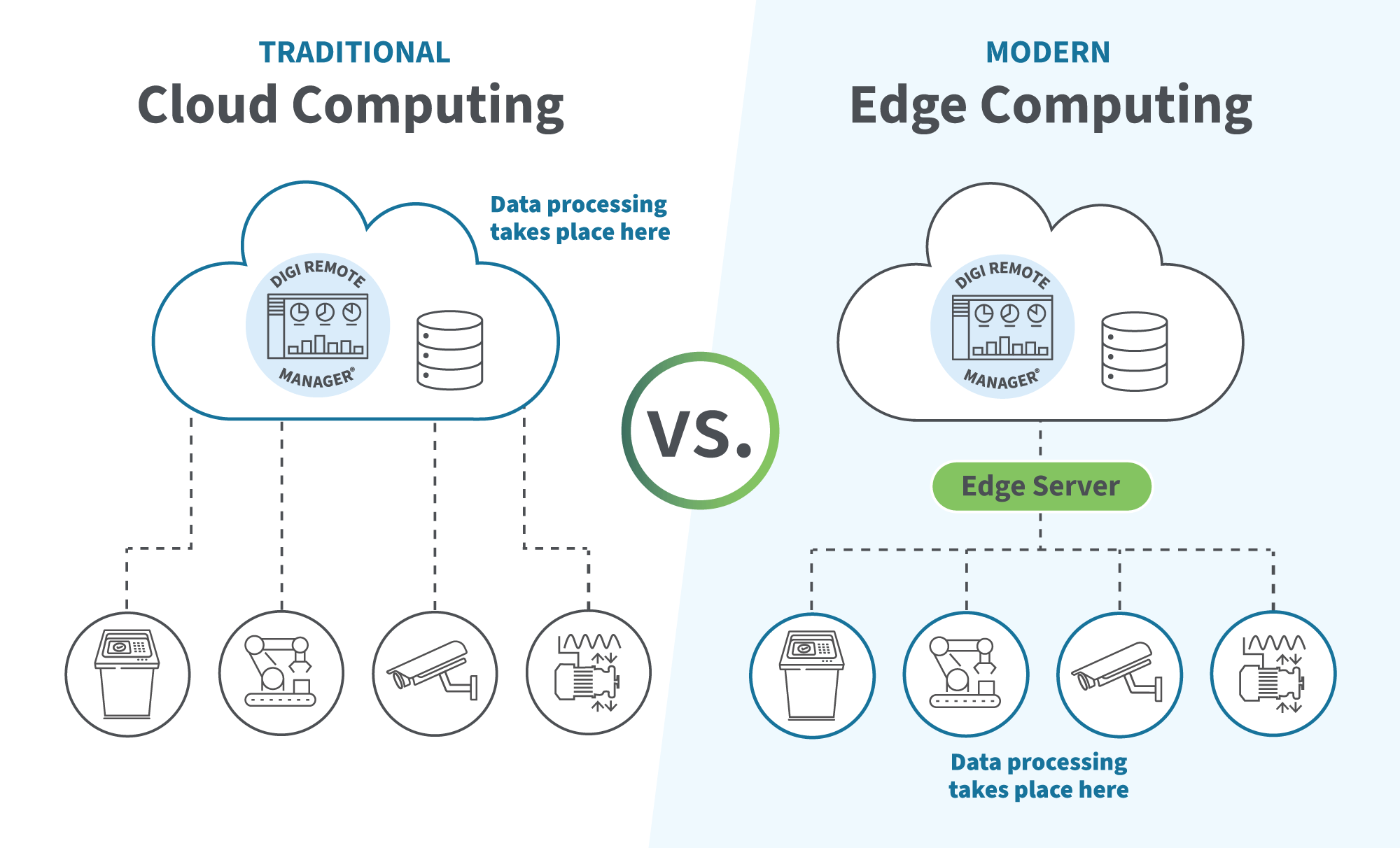
IoT 和边缘计算
IoT 是指各种数据收集设备,它们可以在边缘处理数据,也可以不在边缘处理数据。IoT 设备的一些示例包括
- 制造生产监控器
- 健康可穿戴设备
- 安全运动传感器
- 智能照明系统
- 自动驾驶汽车
- 智能交通灯控制
- 环境监测传感器
- 智能公用事业计量表
- 车队跟踪装置
IoT 中的边缘计算可使设备提高数据使用效率并简化操作。与边缘计算技术结合使用时,IoT 设备可支持实时数据处理,从而提高关键应用中的数据路由速度,改善带宽管理,降低数据成本。
边缘计算如何工作?
边缘计算解决方案支持一系列运营目标。边缘基础设施可包括摄像头、传感器和一系列IoT 设备,这些设备可立即在本地执行处理,并仅将特定数据路由到集中式服务器进行进一步分析、运营洞察或存储。智能边缘设备还可以采取一系列行动,从执行分析、启动报告或服务单,到因安全问题立即停止机器或操作。
经过初步处理后,边缘计算设备会确定哪些数据需要传输到其他系统。因此,通过网络发送的数据量是有限的,从而确保只有关键信息才会被传送到数据中心或云计算解决方案,以实现商业智能。要实现这种复杂的边缘计算模式,需要将专用边缘计算芯片、设备处理能力以及远程监控和管理工具结合起来。

边缘处理
传统的数据分析方法通常依赖于集中式处理解决方案,如数据中心、云解决方案或服务器。虽然这些方法能提供足够的计算能力,但需要通过网络从IoT 设备或其他收集点发送数据进行处理。最终,这会导致延迟并需要大量带宽,从而降低效率。
通过边缘部署,移动、IoT 和其他边缘计算设备具有处理能力,可以分析收集到的信息,支持自动化、实时决策或操作调整。这可以通过嵌入式边缘芯片和智能边缘设备来实现,从而在数据产生的地方立即进行边缘处理。
与雾计算相比,边缘计算的优势也相当可观。在雾计算中,边缘层与中央数据中心或云解决方案之间有一个处理层。虽然这些服务器可以协助处理,但它们仍然需要将数据传输到收集点以外的地方,这可能会占用大量带宽并导致延迟。分布式边缘计算允许网络中的每个边缘设备自行收集、存储和处理数据。通常不需要与网络保持一致的连接,因此无论连接是否稳定,操作都能继续进行。
边缘基础设施
边缘基础设施包括更广泛系统中的所有网络组件、连接的移动设备和IoT 接入点。具体的边缘计算硬件和软件解决方案各不相同,可能包括一系列边缘计算节点和设备:
还需要考虑软件部分。例如,Digi Remote Manager®等平台允许企业在边缘监控硬件,使其成为等式的必要组成部分。
例如,Digi Remote Manager 可通过 "单一窗口"提供全网可视性、远程访问、设备配置和安全监控。此外,该解决方案还可根据指定条件从网络边缘提供即时警报和通知,并支持带外访问边缘设备以进行远程管理。
边缘计算的优势
边缘计算有很多优点,因此这种方法对各种用例都很有价值。下面是几个例子:
- 通过IoT 边缘计算,工业企业可以主动监控生产,并根据实时数据做出运营决策。
- 而在工业 4.0应用中,边缘计算对于机器人和制造自动化的实时处理至关重要。
- 实时数据处理为在病人病情发生变化时立即干预医疗保健创造了机会,并确保金融公司能够利用快速变化的市场条件。
- 边缘计算工具和智能设备使任何行业的公司都能减少网络压力和带宽使用。在节约成本的同时,这也降低了潜在威胁的风险。此外,即使云连接中断,关键业务也能继续进行,从而使边缘计算应用和系统能够支持业务连续性。
下面将详细介绍边缘计算平台、软件、服务和基础设施的一些优势:
- 实时数据分析:边缘计算软件和解决方案消除了处理延迟。反过来,企业可以立即获得洞察力,支持实时决策,以提高效率、快速解决问题或利用短暂的机会窗口。
- 安全和隐私:由于边缘处理需要跨网络传输的信息较少,敏感数据可能永远不需要跨越互联网,因此可最大限度地减少威胁。此外,大量数据不会存储在第三方云提供商处。
- 带宽和效率:由于边缘计算服务在边缘执行计算、分析和自动化,因此减少了网络资源和带宽的使用,提高了效率。此外,较低的带宽使用率通常能节约成本,使企业减少服务呼叫或避免可能引发额外费用的意外超额。
- 速度和减少延迟:边缘计算可以更快地响应本地事件。利用边缘计算,延迟通常可以降低到接近于零。除了使企业直接受益外,这种速度还能为游戏、流媒体和实时通信等以用户为中心的应用提供更好的体验。
- 远程管理:远程管理平台允许企业远程监督部署的边缘设备,使设备和网络管理更加简单。这些集中式平台是等式的重要组成部分,可确保通过台式机或移动设备随时随地进行访问、洞察和通知。
- 可扩展性:部署边缘基础设施可支持已部署设备的扩展和整体可扩展性,使企业能够在需要时提升或增加功能,并使边缘计算系统能够处理来自不断增加的联网设备的数据负载。
- 成本控制:边缘计算可减少对大量云基础设施的需求,从而帮助企业降低成本。此外,本地化处理和存储也更具成本效益,特别是对于在资源有限环境中运行的组织而言。
- 可持续性:利用边缘计算,企业可以减少碳足迹,提高可持续性。边缘设备通常是由电池供电的低能耗设备。它们所支持的实时决策还可以通过识别低效或调整流程来消除浪费,而快速扩大或缩小规模的能力可以持续保持运营的合理规模,确保能源和资源的高效利用。
- 边缘人工智能:将人工智能与边缘计算产品和解决方案相结合,可增强IoT 设备的功能。先进的数据处理和分析能力可在设备层面实现,从而获得更强大的洞察力,而且往往是实时的。
边缘计算解决方案
要想获得有效的解决方案,组织必须根据本组织的行业和用例定制边缘基础设施。这样才能确保解决方案以有针对性的方式满足独特的需求、优先事项和痛点。
全面的边缘计算解决方案还能让企业利用尖端技术来提高成果。采用5G 蜂窝连接可减少延迟,增强边缘设备在整个网络中的连接。实施人工智能和机器学习可在设备层面实现先进的实时数据处理,在最关键时刻支持速度和灵活性。
企业边缘计算
传统的企业计算在很大程度上依赖于数据传输,数据先在用户计算机等终端创建,然后再传输到集中式服务器。企业边缘计算利用整个网络设备的计算能力,减少了对网络资源的压力,降低了数据成本,提高了可靠性并加快了速度。
通过量身定制的企业边缘计算解决方案,企业可以创建一个定制的生态系统,在提高效率的同时支持可扩展性并保持经济性。
工业边缘计算
工业边缘计算为边缘设备、自动化系统、机械和机器人提供了所需的高速处理能力,使企业能够访问实时分析,从而在快节奏、不断变化的环境中支持快速决策。专为这一领域设计的IIoT 边缘设备(工业物联网)通常坚固耐用,可确保它们能够承受极端温度等环境挑战,并持续以最佳状态运行,而且具有内置故障切换和冗余的高可靠性。
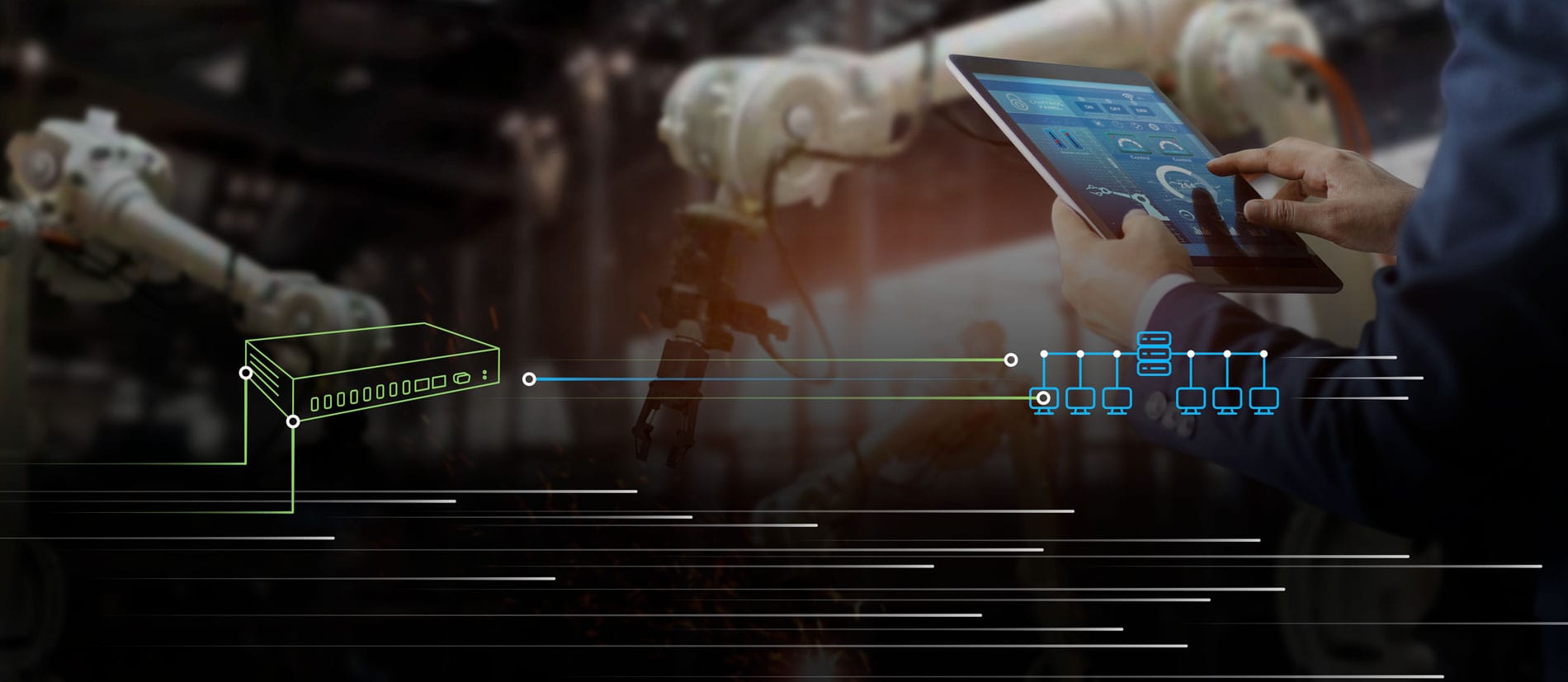
边缘计算应用和用例
如今,从智能手机上的指纹识别器到十字路口的实时交通监控,边缘计算应用已经在我们身边得到广泛应用。让我们来看看一些跨垂直领域的边缘计算实例。
制造业
在制造业中,边缘计算解决方案可实现制造自动化、机器人技术和预测性维护。IoT ,工业 4.0 范式中的边缘设备可执行工厂装配,根据需求快速扩大或缩小生产规模,并提高生产速度和准确性,从而将人员解放出来处理工程、技术和管理任务。
此外,摄像机和IoT 边缘设备可以检测生产中的异常情况,并移除不符合规格的部件。它们可以监控生产效率,并将数据与历史时间表进行比较,以支持主动维修。IoT 和边缘计算正在推动制造业的全面数字化转型,使制造商能够利用边缘设备支持工业自动化和预测性维护,建立智能工厂。
零售
在零售业,边缘数据处理支持实时店内分析,使零售商能够快速适应不断变化的条件。IoT 设备可以自动进行库存管理,当特定产品的数量低于设定阈值时,会向零售商发出警报。边缘计算还可以为客户提供个性化购物体验,利用数据驱动的洞察力为客户提供个性化推荐,并进行动态价格调整,以提高产品和服务的销售额。
医疗保健
边缘计算能够实时处理医疗设备、可穿戴设备和传感器生成的数据。这在需要即时决策和响应的医疗场景中至关重要,例如病人生命体征的突然变化或紧急医疗情况。
医疗可穿戴设备可以存储有关心率、体温、血糖和其他指标的信息,然后向患者或医生发送重要通知,并提供智能用药提醒。此外,边缘计算还能限制敏感和受保护的患者信息的传输,从而使医疗机构提高安全性和隐私性。边缘计算还可以提高远程医疗解决方案的能力,IoT 设备可以在关键的医疗过程中执行快速数据分析,改善患者的就医体验和结果。
交通运输
边缘计算在交通运输系统的变革中发挥着至关重要的作用,可提供各种用途和优势,以提高效率、安全性和整体性能。以下是边缘计算在交通领域的一些主要应用和优势:
- 自动驾驶汽车:边缘计算使自动驾驶汽车能够实时分析数据并采取快速行动,以应对不断变化的情况,读取并响应路标和交通信号,并保持安全。
- 实时交通管理和公共交通路由选择:IoT 和边缘计算使智能城市能够根据道路状况的变化调整交通信号灯,从而主动管理交通。如今,公交信号处理可使公交车在拥堵的城市道路上更加顺畅地行驶,确保公共交通乘客准时到达目的地。
- 应急车辆:凭借先进的车载蜂窝路由器,警车正越来越多地利用边缘处理技术来管理来自车载设备和外围设备以及随身摄像头和通信设备的本地数据,以缩短响应时间。
- 物流:IoT 和边缘计算在资产跟踪以及车辆和货物监控方面为发货和收货组织带来了益处。
智能城市
借助边缘计算,当今的智慧城市可以通过主动管理基础设施(包括公用事业、城市照明、水/废水管理和城市交通系统)中的能源使用,提高可持续性。同样,边缘解决方案还能与公共安全组织保持联系,确保在自然灾害等紧急情况下提供实时数据。IoT 和边缘计算还支持废物管理、垃圾压实和环卫车辆的智能路由选择。此外,IoT 设备还能让城市监控政府拥有的建筑和车辆,提高安全性并确保正确使用。
边缘计算技术
边缘计算技术汇集了更快的网络、智能边缘设备和编程增强技术的力量,使计算和数据管理能够在网络边缘进行。让我们来看看边缘计算模型的组成部分。
边缘系统
边缘系统是一种综合解决方案,为企业提供在边缘处理数据的所有必要组件。通常有四个主要组件:移动和IoT 设备、网络连接、存储解决方案和系统管理平台。设备在边缘收集和处理数据,而网络允许将指定数据传输到服务器或云存储等存储解决方案。系统管理平台为边缘系统提供监督,对设备、连接速度等进行监控。
以下是一些 Digi 边缘系统的示例:
边缘设备
边缘设备是支持边缘数据处理的专用计算硬件解决方案。此外,它们还可支持各种连接需求,确保任何需要进行的数据传输都能以有限的延迟和适当的可靠性完成。一些常见的边缘设备包括
边缘平台
边缘计算需要软件平台来支持和管理整个系统。 Digi Remote Manager例如,美国电信局(NTT)就提供了一个全面的解决方案。有了Digi Remote Manager ,设备配置和部署都可以集中进行。此外,企业还可以设置设备自动更新、监控安全性并接收即时警报。此外,还提供 VPN 等高级安全选项。
- Digi Remote Manager
- Microsoft AzureIoT Edge
- 谷歌分布式云边缘
边缘计算产品和服务
Digi 是领先的边缘计算产品和服务提供商,提供针对特定行业量身定制的高性能解决方案。这些全面的解决方案提供企业无缝过渡到边缘基础设施所需的关键设备、软件和支持服务。
以下是各种 Digi 边缘计算产品和服务的概述,以及这些产品和服务如何使您的组织受益。
边缘计算硬件
Digi 的边缘计算硬件解决方案旨在满足企业从其IoT 投资中获得最大收益的需求,确保他们拥有计算能力、安全性和可靠的连接性,以简化运营、提高安全性、实现流程自动化并支持人工智能等先进功能。从嵌入式系统到蜂窝路由器,Digi 解决方案可在各行各业实现先进的边缘计算。这些解决方案包括

边缘芯片
边缘芯片是嵌入到系统模块中的组件,旨在支持医疗、工业和交通使用案例中IoT 应用的最先进要求。这些 SOM 支持边缘人工智能,增强了边缘设备的功能,并支持实时数据分析,以实现快速决策和操作调整。Digi 整合了来自恩智浦(NXP)和意法半导体(STMicroelectronics)等制造商的业界最强大的应用处理器,并提供设计就绪的解决方案,使任何行业的企业都能从这些尖端技术中获益,并快速上市。
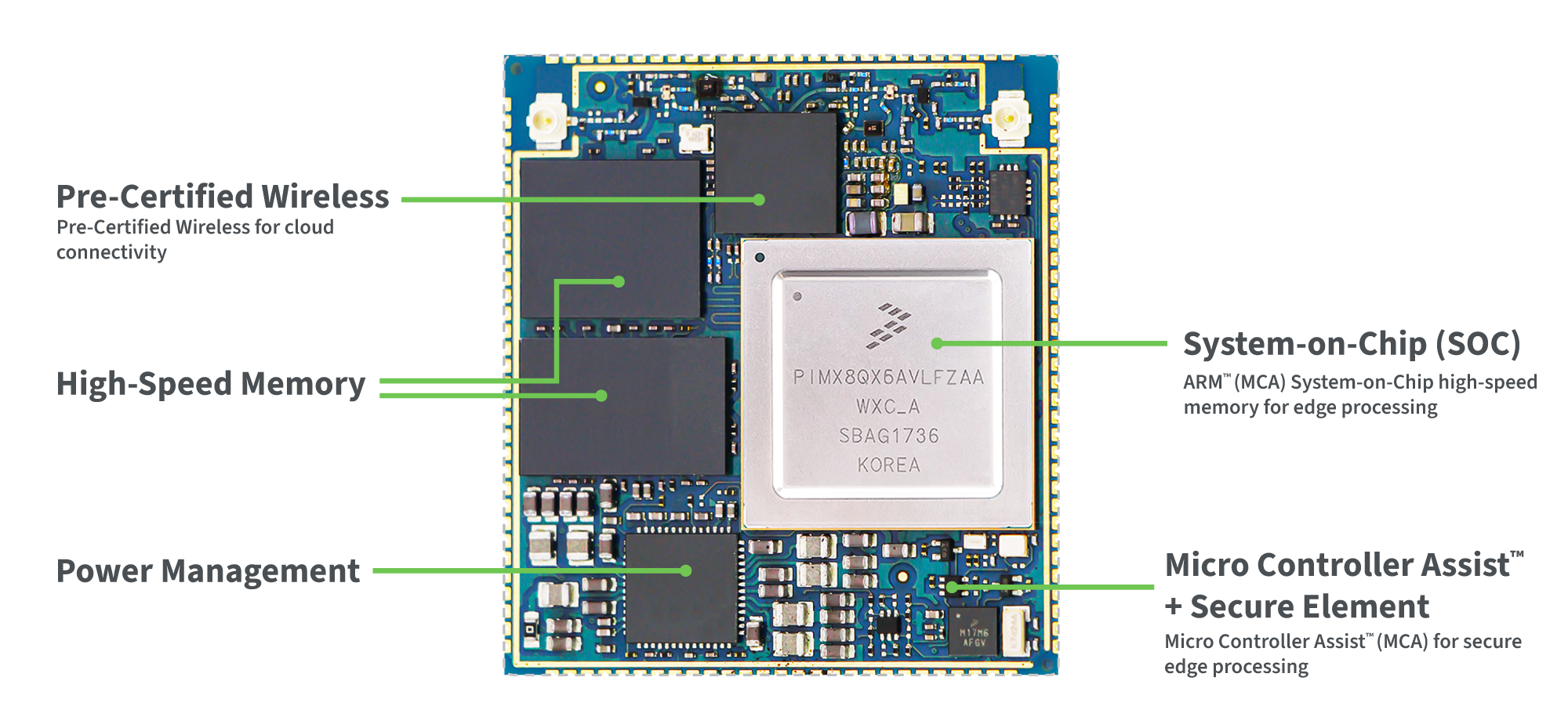
边缘服务器
边缘服务器存在于核心数据中心或云解决方案之外,使其更接近终端用户和数据生成设备。采用边缘服务器可提高计算能力,同时大幅减少延迟。此外,边缘服务器与内部网络连接,无需通过互联网传输数据,因此更加安全。
Digi 提供一系列服务器选件,旨在满足各种需求和用例,包括
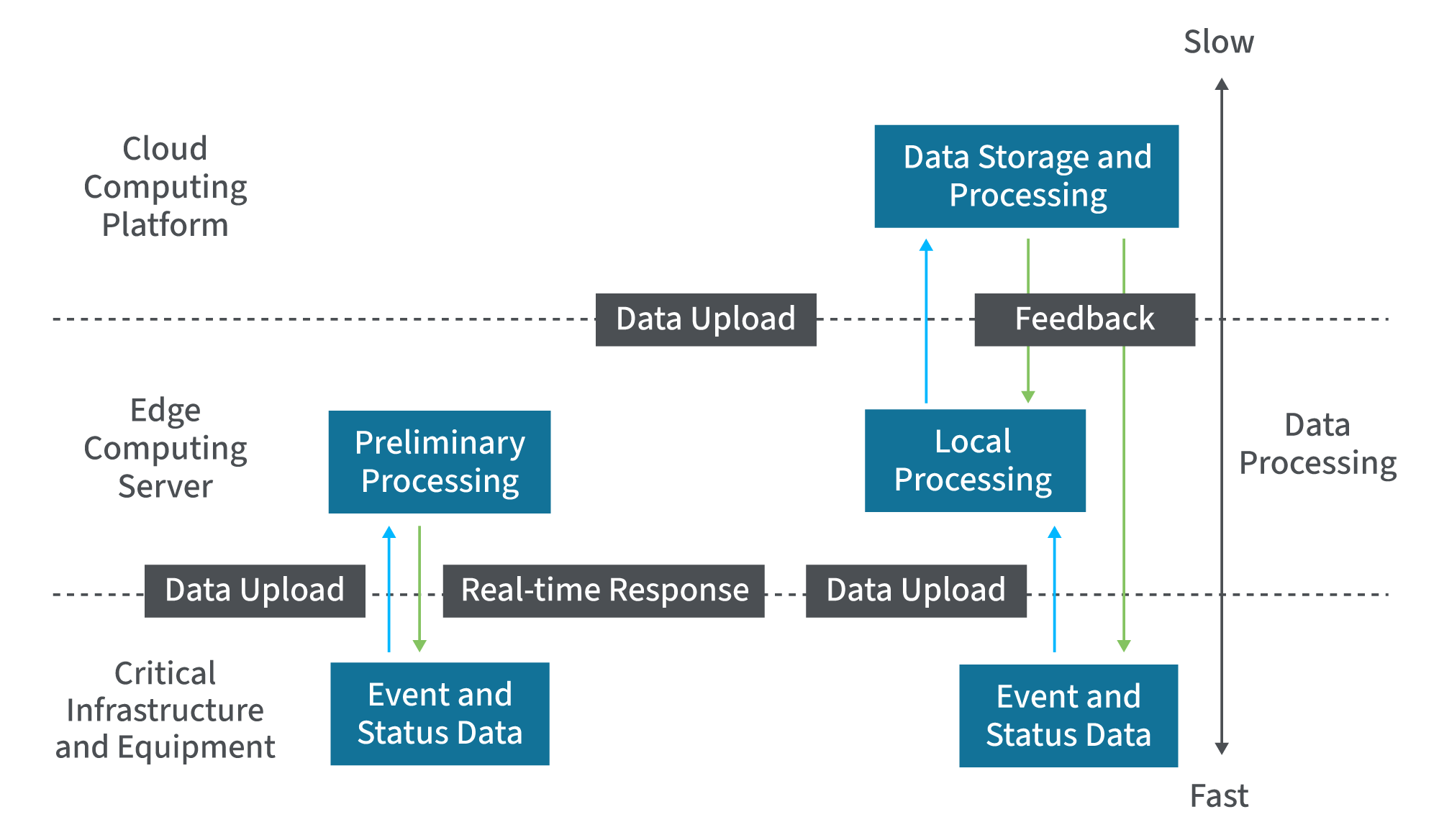
边缘计算节点
边缘计算节点是位于网络边缘的物理或虚拟机,包括我们讨论过的各种边缘设备和边缘服务器。通常,它们充当路由器、网关、应用处理器或边缘服务器,允许IoT 设备在网络之间通信,执行边缘计算任务(对于智能设备而言),并与其他边缘设备或连接到云的中间边缘服务器之间传输数据。此外,它们还可以协助数据收集和分析,以及运行IoT 设备在运行过程中需要交互的容器化应用。
Digi 的边缘计算节点(包括前面列出的所有边缘硬件设备)是灵活、可编程、易于部署和管理的解决方案,可根据各种边缘计算应用的需要进行配置。此外,我们的解决方案优先考虑安全性,确保您的环境受到保护。
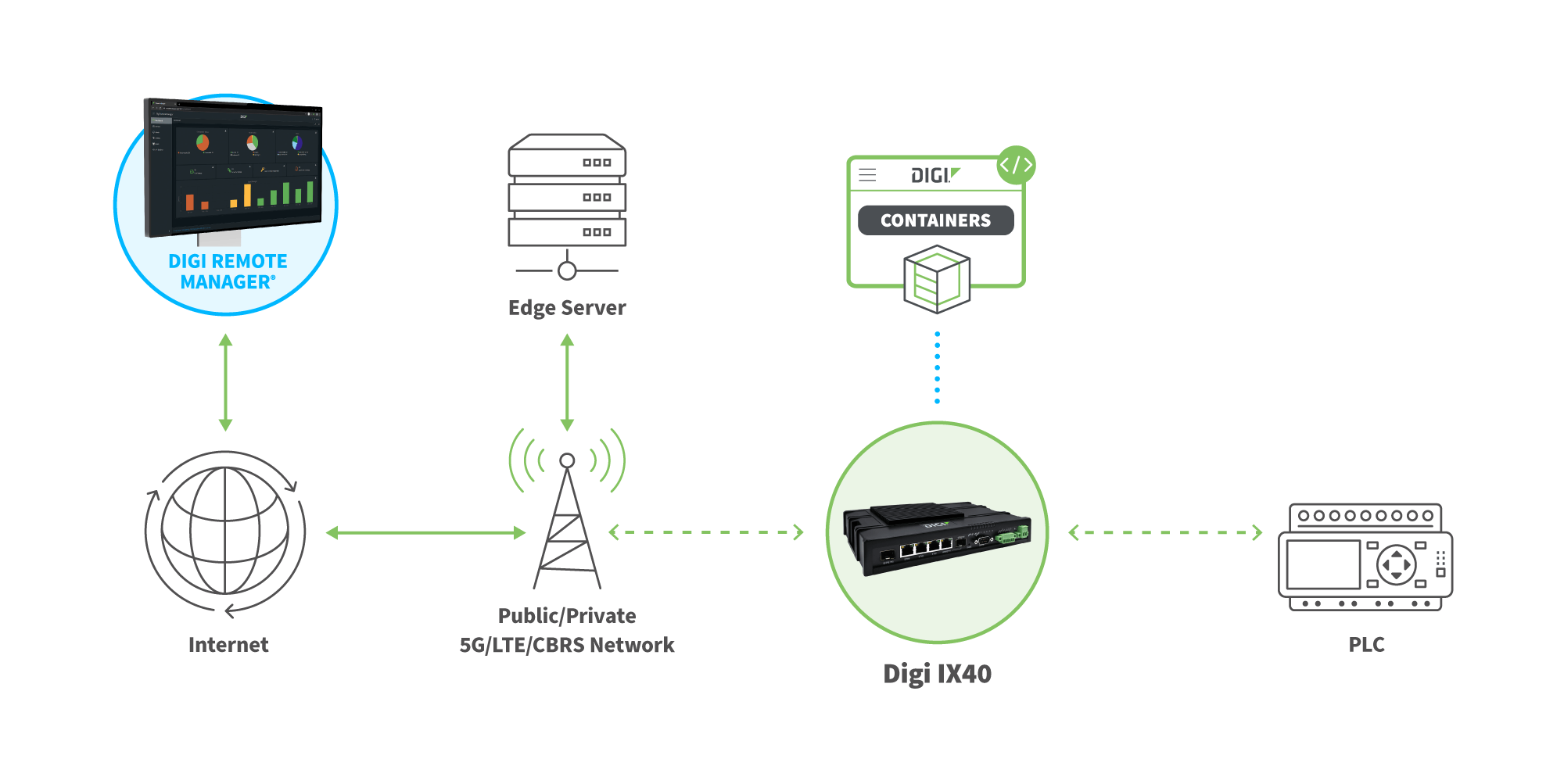
边缘计算软件
边缘计算软件使智能网络的管理变得更加简单。在提供监督的同时 Digi Remote Manager简化了设备配置和部署。此外,它还支持在产品生命周期内进行大量固件和软件更新,以简化安全性和合规性,并提供有关设备状况和网络健康的实时警报。
边缘计算服务
IoT 随着当今组织寻求最佳利用其劳动力、资源和预算来优化其运营、IT 和技术服务以及安全性,"云计算 "和 "边缘计算 "提供了巨大的优势。但是,在规划、开发和部署以及部署的持续管理过程中,采取这些措施可能会增加组织目标的复杂性。
Digi 拥有一套全面的服务,可为各行各业的企业提供支持,无论他们是在设计和制造带有嵌入式系统的产品、在网络边缘部署IoT 和边缘计算设备,还是在升级现有基础设施以改善运营:
- Digi 无线设计服务:这支才华横溢的工程师团队可在原型设计、开发、认证、管理和将产品推向市场等方面为原始设备制造商提供支持。
- Digi 专业服务:这支专家团队可在您规划部署时为您提供广泛的支持,从现场勘查、采购和部署,到脚本和编程,再到支持对已部署网络的持续管理。
- Digi 连接服务:Digi Connectivity Services 团队帮助使用Digi XBee Cellular 模块开发产品的 OEM 厂商快速设置数据计划,使添加蜂窝连接和构建无线网络的过程变得简单方便。
- Digi 技术支持:这支由专业人员组成的团队可通过一系列支持选项帮助排除技术故障和解决问题,包括为关键任务部署提供优先支持合同。
Digi International:边缘计算解决方案的领导者
在当今的数字化时代,边缘计算解决方案在提供关键功能的同时,还能简化操作。在源头处理数据可在不断变化的环境中实现自动化、实时分析和快速决策。最终,边缘系统可确保持续的灵活性和可扩展性,同时增强计算能力,使人工智能和机器学习等尖端技术更易于集成和部署。
Digi 提供专为满足从制造自动化到医疗保健、零售、运输、公共部门等各行各业需求而设计的边缘解决方案。我们的解决方案在设计时充分考虑了坚固性和合规性,确保它们在具有挑战性的条件下仍能发挥最佳功能,并提供重要的安全机制来保护数据。